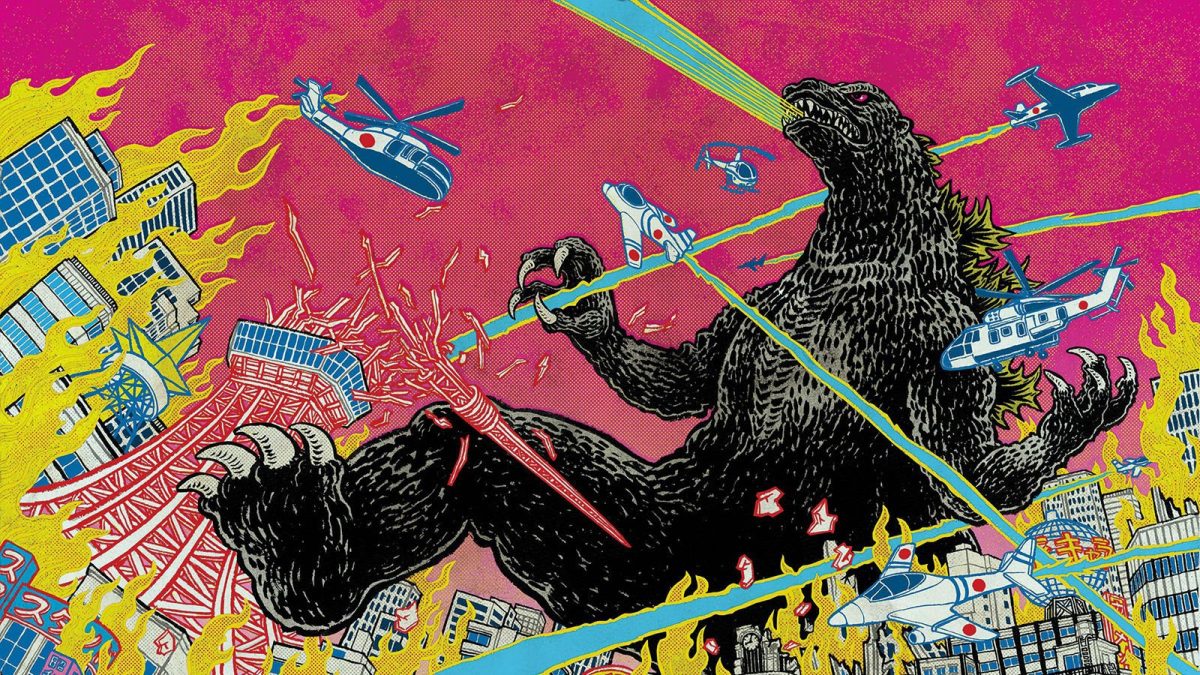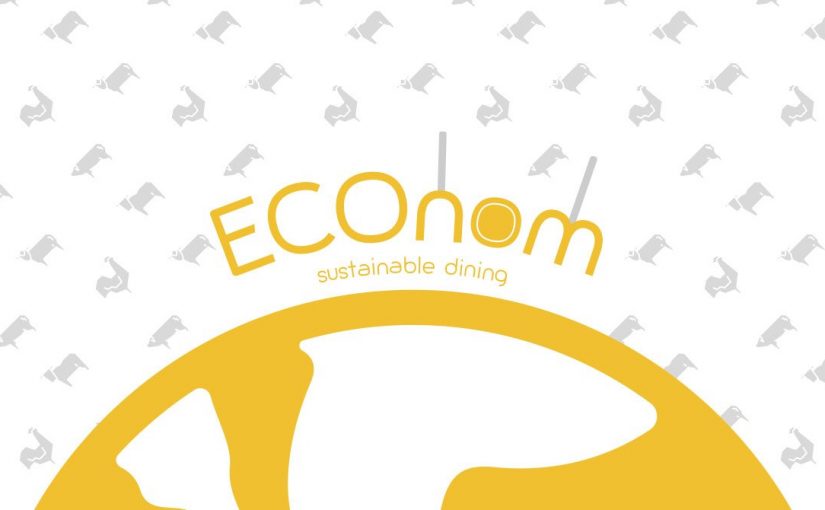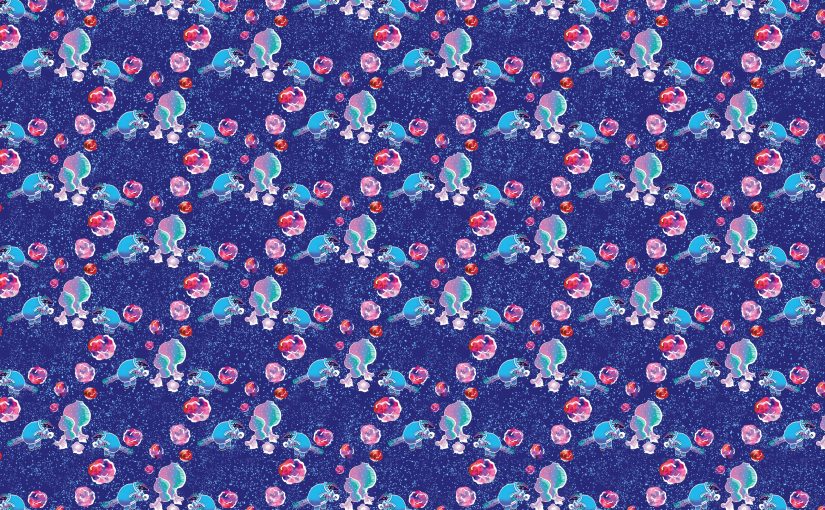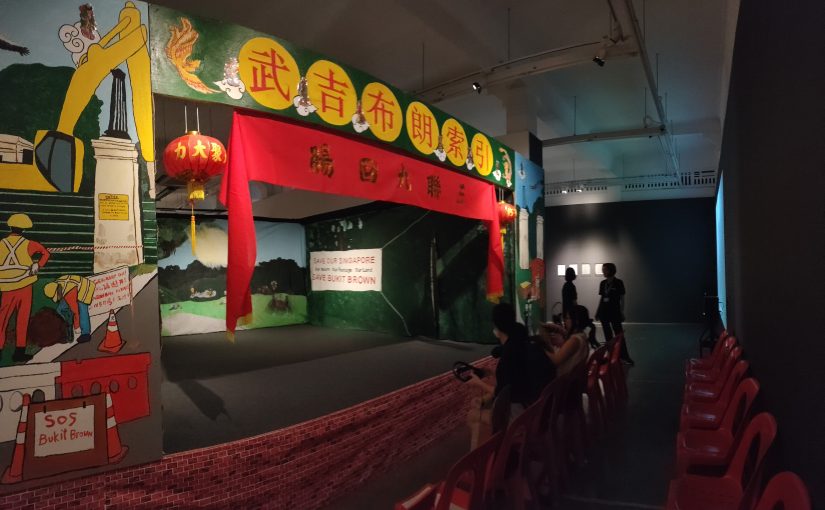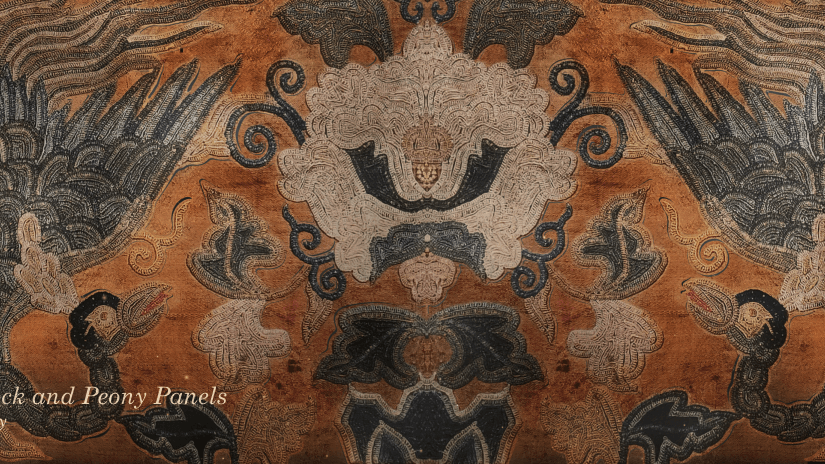Category: My Work
Assignment 1 – Creative Industry Report
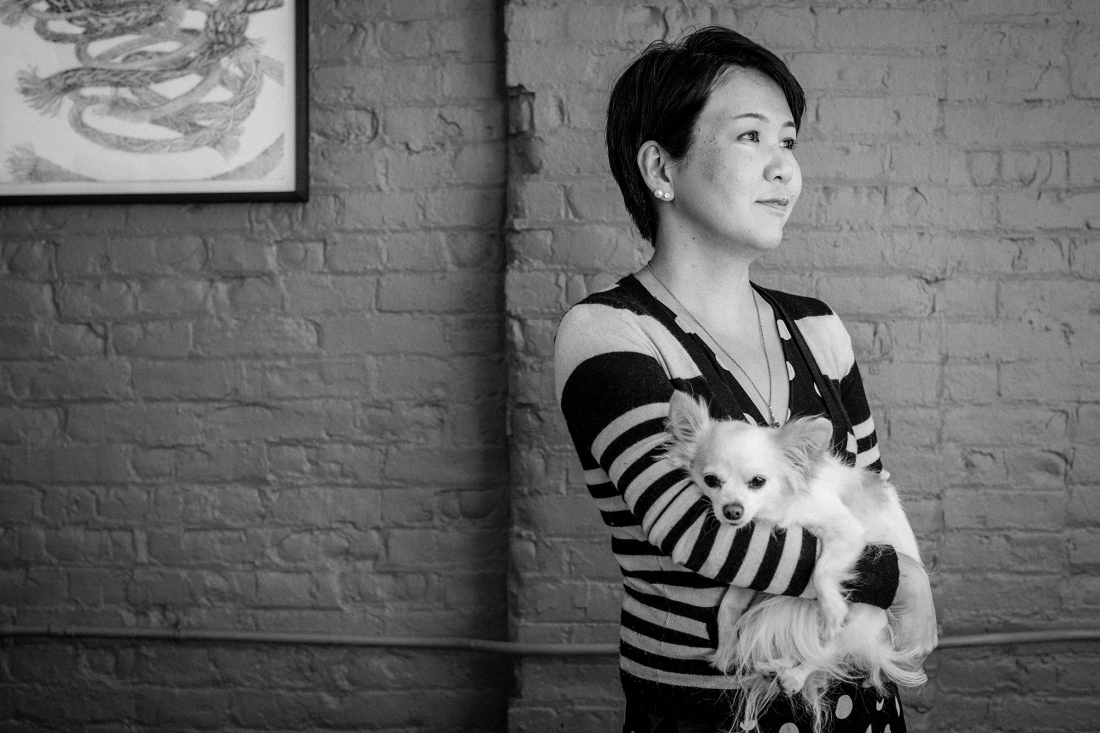
This is Yuko Shimizu.
An award-winning Japanese Illustrator based in New York, whose works are mainly in the medium of brush and ink. She teaches illustration at the School of Visual Arts in New York and for everyone else around the world, we may take up her short course on Skillshare or learn from her frequent activity on Instagram.
The first thing that attracted me to this artist was that she integrates her Japanese heritage into her contemporary works; influence from the Japanese Ukiyo-e can be seen in her style. I believe that she takes heavy references from not only reknown ukiyo-e painter- Katsushika Hokusai but also Utagawa Kuniyoshi whom she mentioned in her blog post titled “15 Influencers that will stick with you forever”. Though the entire list is made up of artists from different fields of art and design, ranging from film directors, graphic designers to Authors, the presence of the ukiyo-e definitely echoes as seen when compared.
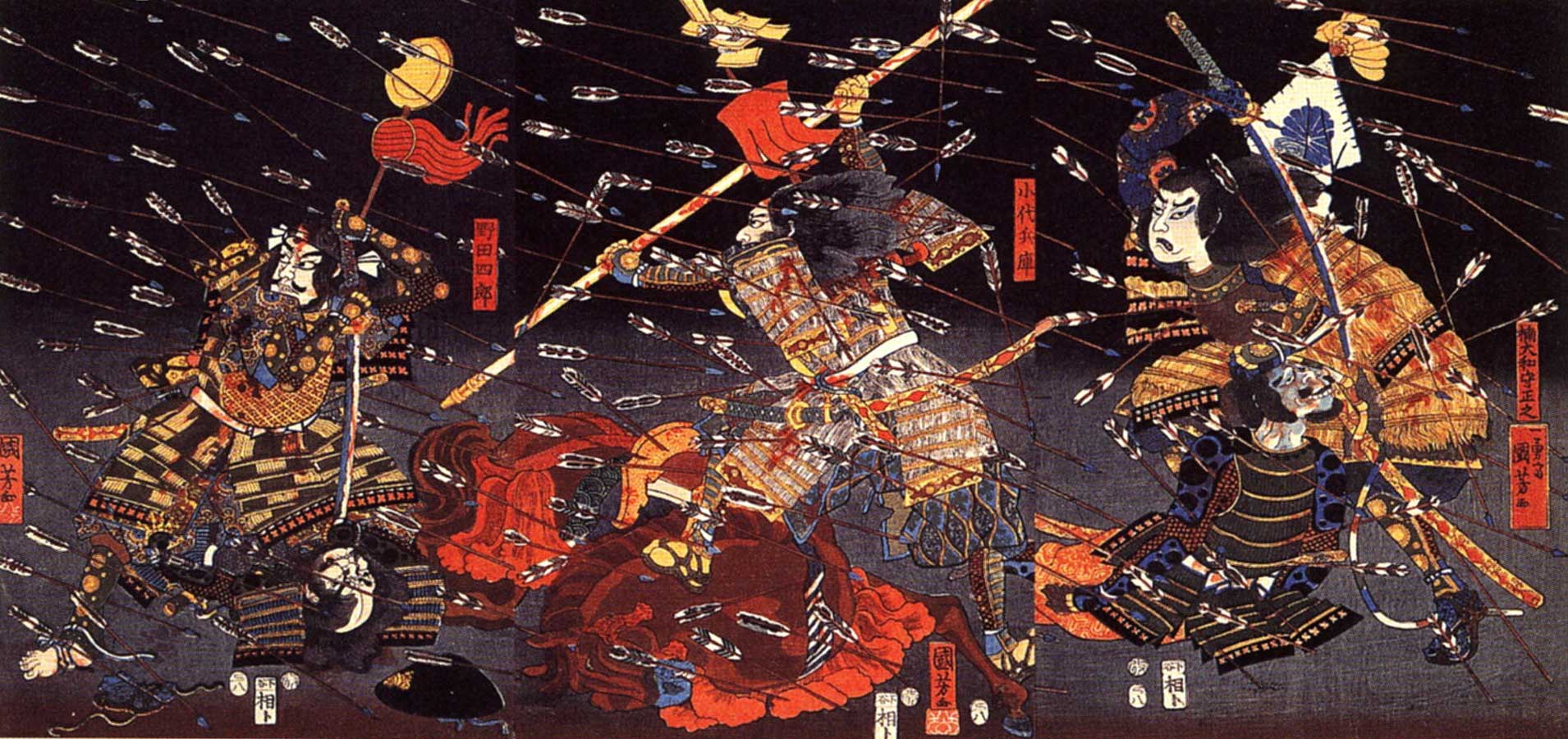

Yuko is also an inspiring figure as her success is truly built up through pure ambition. She was originally a PR worker and spent 11 years working as one after graduating with a business degree in university. The lack of an official art education made her insecure about her own work for a very long time. Then she finally made the switch in her early-thirties, giving up stable job and income to attend art school. I think it was admirable that she attended art school among 18 year olds and it really goes to show that there is no shame in striving for your goals no matter how old you are.
As a late bloomer myself, one who has been through art school and is still figuring things out, I find her story comforting. She has allowed my to learned that I am still young and that development is not a race for time.
You may view more of her works on her instagram.
ECOnom
ABSTRACT
The topic started with the COVID in its infancy, when it was still the WuHan virus. There was a lot of anger around because of the unhygienic wildlife dishes served in China, that was the speculated cause of the pandemic. It is a reasonable reaction but also a hypocritical one. Sure their exotic diet ended up killing 200 000 people within the span but an average diet is no where not as safe as you believe.
In efforts to limit global warming to 1.5 degrees above pre-industrial levels by 2050, a global goal made under the International Paris Agreement in 2015, global consumption of food especially meat and other animal products need to be reduced by more than 50% of what is consumed today.
More than 45% of the Earth’s land surface are cleared woodland used to raise livestock and on top of that, cattle farming produce large amounts of methane contributing to almost a quarter of all greenhouse gas emissions.
The best diet out there is actually a vegetarian diet and by switching to less carbon intensive or alternative, an individual’s carbon footprint can be greatly reduced to up to 96%.
PRODUCT
A promotional activity for sustainable dining in the form of a Self-ordering Kiosk/phone application.
The final design retains my original intention to redefine how we eat, I decided to focus on the thought process of making meal decisions, imagining it to be part of a larger exhibition or campaign by any sustainable food activist organisation e.g. Quorn, IMPOSSIBLE or IPCC (short for the Intergovernmental Panel on Climate Change under the UN) etc.


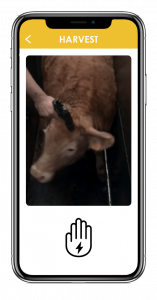

Prev: https://oss.adm.ntu.edu.sg/ytan149/sustainable-food-supply-prototype/
Reflection:
The most difficult task was to make the audience more aware of the impact of their choices and that emotional aspect to care is collectively agreed to be through guilt.
Fung-Alien
Banner:
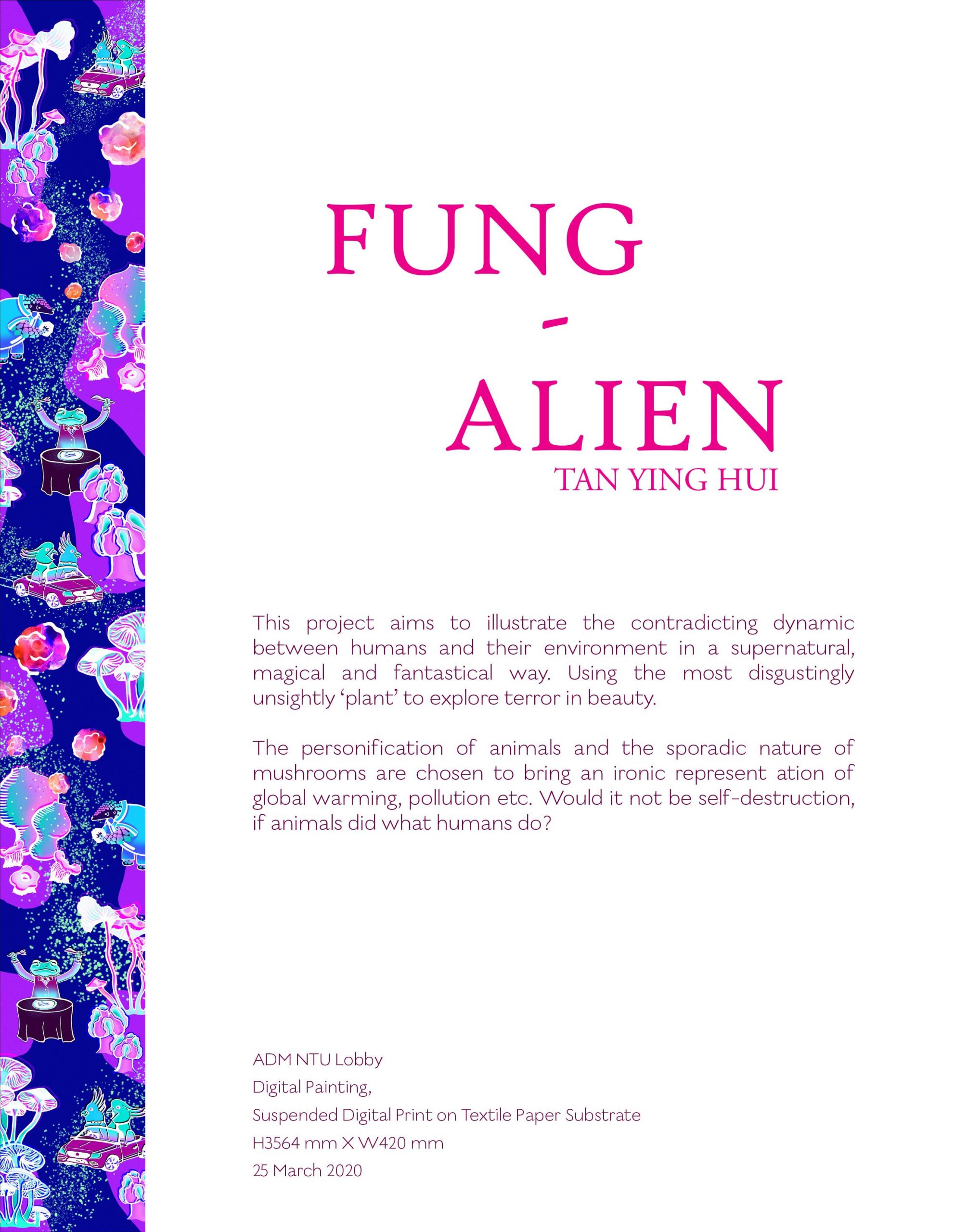
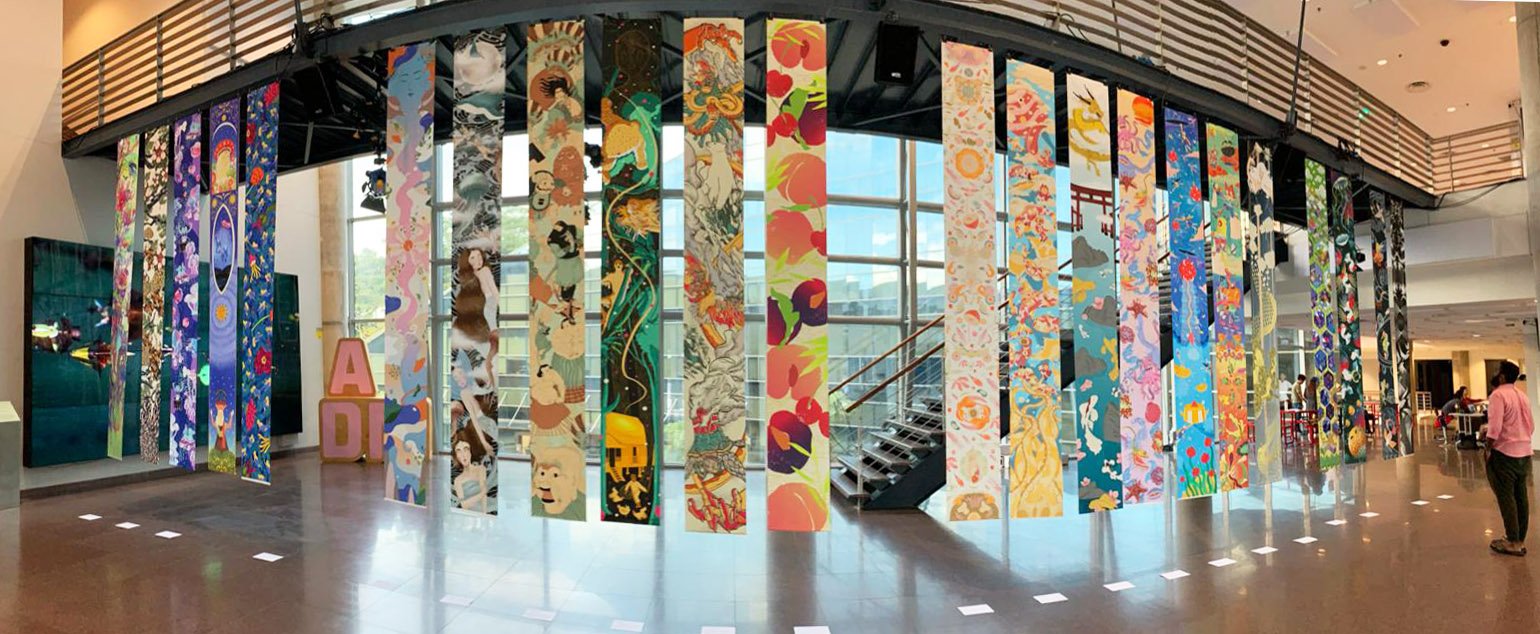
Media Art Nexus:

3840 x 480 pixels
LED 15m by 2m
North Spine Plaza Media Art Nexus
NTU Singapore
Date to be confirmed
Swatch Application:

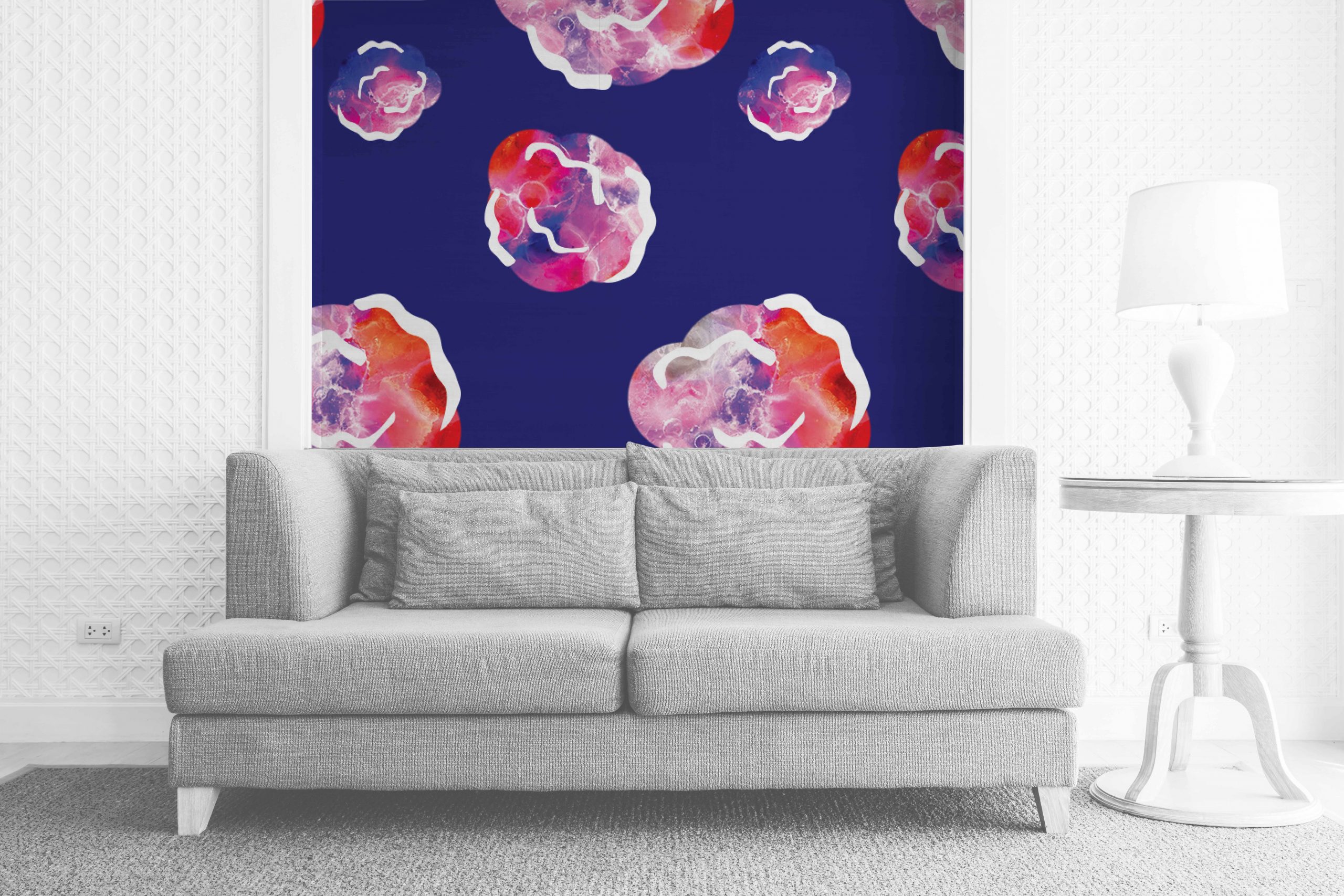
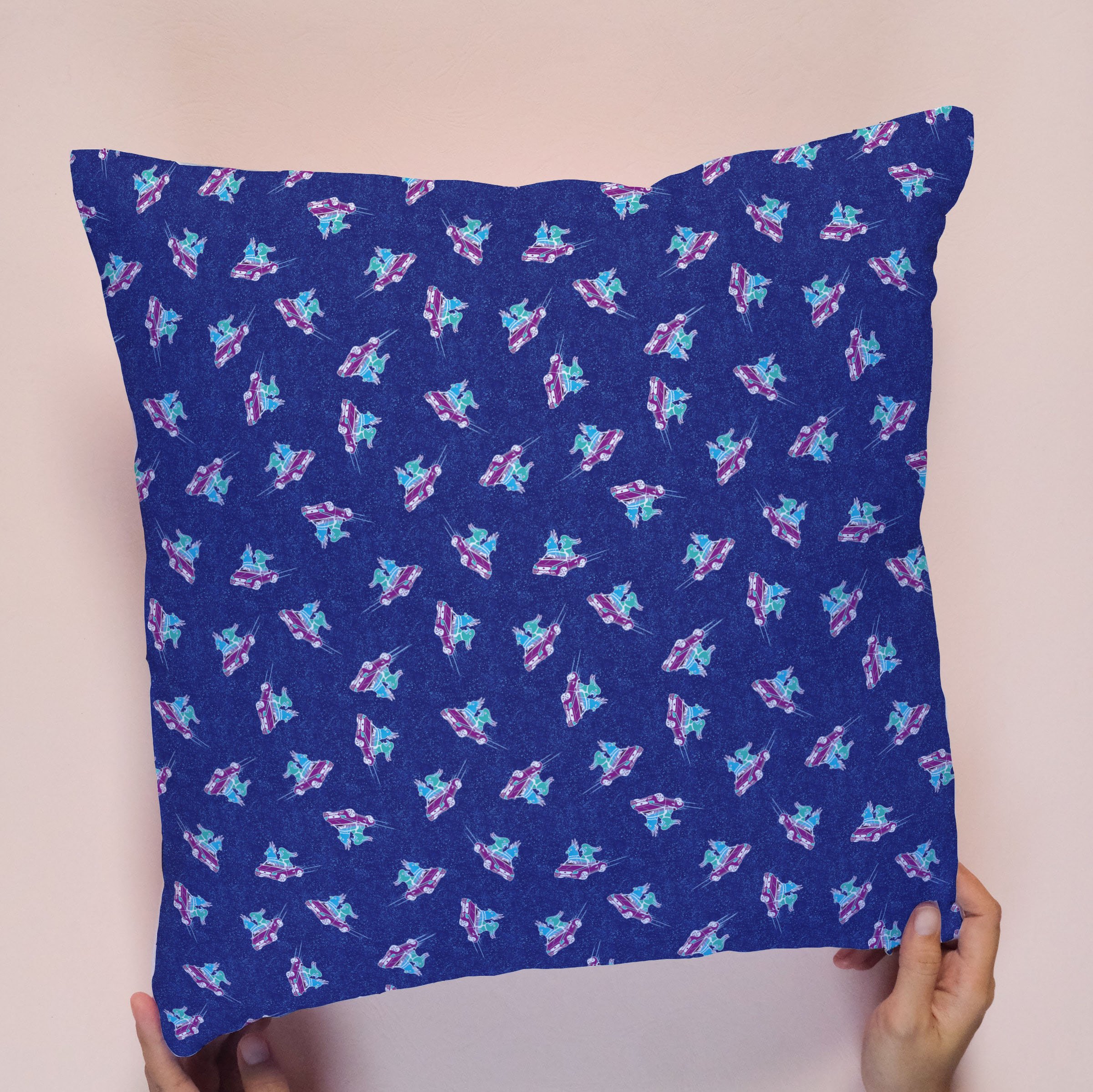
Pattern Collection:
Story of the Forest (TeamLab)
So my favourite interactive installation seen from the visit to the National Museum is, predictably, Story of the forest by TeamLab. The immersive installation animates 69 antique drawings from William Farquhar Collection of Natural History Drawings, commissioned in the 19th Century documenting the flora and fauna within the local region. It starts off with a stunning petaled rain, captivating the audience from the start; an immediate overhaul over your sense of space with simply sound and visual. The black background, like a reversed abyss, made the dome interior larger than it seemed. It was beautiful, however the 3D effect does cause some dizziness. I, myself, stumbled a little crossing the bridge.
The second part of the installation was a the animated wildlife projection along a spiral walkway that wrapped around the Rotunda. I think the site really works for the idea of gradual time progression from day to night. It is unnoticeable that time has ‘passed’ until you enter the night. Regardless of the floating flowers, it was a smoother, more natural experience than the bridge.
The installation ends at the bottom of the dome, underneath the bridge that was part one. Back to the raining flowers but this time, perhaps due to the proximity, my footing felt more stable. The viewing was also more relaxed, one does not need to strained the neck to view the projection in all its glory. We were invited to lie down, a rather soothing therapeutic moment we had as a class.
The slight fantastical theme, though strays from the argument for authenticity and mission to educate, the matter is not of significance. The National Museum had a separate exhibit displaying the real drawings with full descriptions along with scent specimens for that purpose. The magical aesthetic, here, plays as an element to intrigue.
The only setback of the installation, for me, is that it is segmented by blackout curtains. Understandably necessary and disruptive at the same time, that is why I praise the fluidity of the second part. Like curator Ismail had said, the lack of hint in continuation led many visitors to end their visit prematurely. The projections are flawless in visual cohesion but the spatial planning could be better improved.
If i remember correctly, there was a point about Site specificity being taken into consideration. The forested nature was due to the fact the fort canning park was right next door and I do believe it helped to contextualize the exhibit. One may say it is not as effective because visitors rarely make the connection. But then again, the sentiment may be received unconsciously.
The brilliance of TeamLab and other similar companies is that the work is extremely passive on the interactive scale and yet people flock to see. Minus the factor of being insta-worthy, these works have successfully capitalized on the pure joy of viewing. As designers we are always searching for bombastic ways to wow the crowd and here is an artwork that proving high interactivity does not equate to quality of the work.
Such installations also has a double-edge relationship with crowds. It relied on the influence of other visitors, the bandwagon effect to direct traffic. For example, the option to view the falling flowers from the best vantage point which was to lie on the floor. Or that there are sensors that allow the audience to leave an imprint of themselves in the fictional woods. A supposedly casual and relaxing experience, is also disrupted in large crowds.
The focus on the most enjoyable consumption is what I had like to adapt from TeamLab’s Story of the Forest. I realised, the word “Environment” somehow naturally referred to a single large space which was limited my options. Separating the facts from aesthetics sounds like a good approach for serious topics such as mine-Sustainable Food Supply as works loaded with facts were never welcomed. Similarly, for my assignment, there must be a narrative link between the two; one cannot exist without the other because of the cyclical impact of the topic.
Bukit Brown Index #132: Triptych of the Unseen
Bukit Brown Index #132: Triptych of the Unseen was exhibited at Gillman as part of Singapore Biennale 2019. It is a large scale installation consisting of a stage, a three part video performance and an archival collection covering the uproar around the redevelopment and destruction of Bukit Brown Cemetery back in 2011 to 2014.
The set up was a familiar sight, adopted from traditional Chinese Street opera often performed during the Hungry Ghost Festival. The significance of it is that it is a common space where the dead and living meet to enjoy, in this case, as the writing on the red banner connotes, the nostalgic or tragic saga of Bukit Brown. It is a place of tribute and offering to the visiting dead; perfect choice in setting.

I think Post Museum, the creators of this artwork, has achieved their aim “to encourage and support a thinking and pro-active community in this piece.” In an interview from OnCurating, they were asked about where they think they stand between the centre(state) and the periphery(independent). Their answer spoke about who public space belongs to? Saying that Singapore adopted a place management strategy to inject ‘heart and soul’ into the city. The strategy had been used by other cities such as New York and Paris and is referred to as “placemaking”. It is directed to developing participatory communal places and improving quality of life for its residents. It is after this point that their response really raised questions for me. Post Museum raised a point that placemaking should not be exclusive to urban planners and the government, it should be a shared decision. Because we are all enagaged with said space, thus are always participating in the placemaking process. Post museum may be referring to their artistic practice but I find it prevalent in this project.
I picked to write about this work because it is closely related to my idea for FYP; revolving around culture, heritage and identity. Why heritage should be preserve and how it ties to belonging? Bukit Brown cemetery may house many graves of pioneers such as Tan Lark Sye (1897-1975), entrepreneur and co-founder of Nanyang University and Chew Joo Chiat (Joo Chiat estate) but why is it important to conserved them? What reasons is there to be upset other than the fact that digging graves is disrespectful? Triptych of the Unseen first featured at Substation in 2018 and the artistic director then spoke of heritage as a form of control. He said “heritage really largely is not just about the past, but the way you define the past also determines your present and future.” It is a deceivingly harmless topic for one so political. (at least in Singapore) I wish to go into more detail in my next post about my FYP ideas so the discussion shall end here.
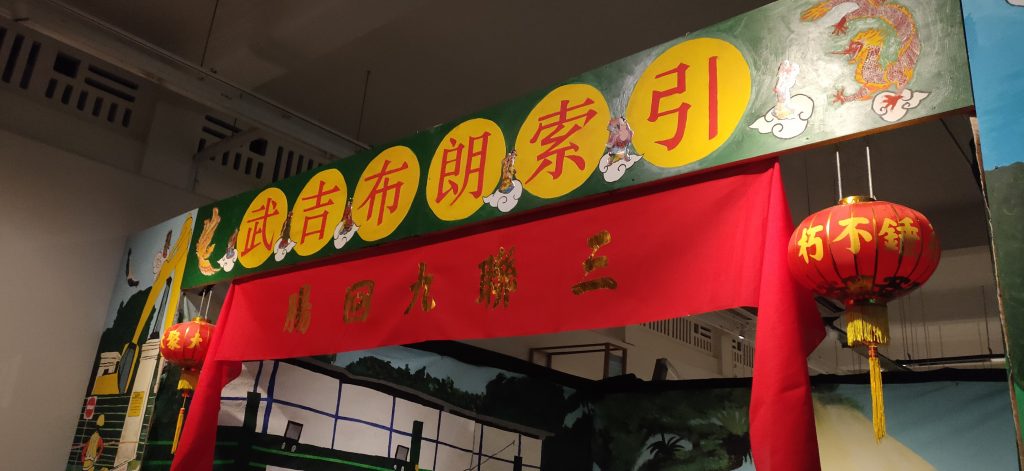
The meat of the story is literally in the content of the work. The three part video performance, taking on the perspectives of the ‘Ghost,’ ‘Activist’ and ‘Bureaucrat’. It depicts the struggle of space in Singapore through moral contradictions of the three characters and their relationship with each other. The choice for implementing the virtual reality setting was to “trap the spectators and performers within this ‘unseen’ tragicomedy where they ‘are condemned’ to watch and perform this act endlessly.” When you enter the virtual space, you are sat in within an ‘ghost’ audience as everyone is wearing a opera mask. “Unknowingly we all become victims to the priorities embedded in the grammar of the city.”
Reference:
https://www.singaporebiennale.org/art/post-museum
Concept Development: Eat Your Veggies
Research Critique 1: Wearable Technology
Ying Gao is a Montreal based fashion designer and professor at University of Quebec whose interactive work features a lot of animated textiles. Her recent project – FLOWING WATER, STANDING TIME capture the ever-changing persona of Jimmie G from the novel, The Man who Mistook his Wife for a Hat. He is a middle age man who thinks himself to be still a youth at 19 years old, and he jumps between these two mental age which Ying Gao describes as a metamorphosis.

According to Dezeen, “The garment reacts to the chromatic spectrum using colour, light sensors and tiny cameras that are connected using a rasberry PI computer, to gather information about their environment. This data then activates a series of actuators and magnets interlaced with silicone to cause the fabrics to move.” It is interesting to note that besides silicone, the fabric also includes glass elements created in studio. These combination of materials, helped Ying Gao to achieve the shifting hues in the “chameleon-like” autonomous dress.
As far as my knowledge goes, Raspberry Pi is another version of an Arduino, they are both open source technology that are sustained by the creative digital community. Tutorials and project ideas are quite abundant online and there are even ways to help find nearby Raspberry buddies to get creative together. The true benefit of open source technology is that it is firstly, free knowledge. Secondly, the amount of projects available for reference is infinite, the number will always be growing as people feed off ideas of others to make their own.
I have played around with a Circuit Playground before, it is a cousin of the Raspberry Pi. So references and forums I have searched online were a learning process to aid my production process. I think as I am a designer, I do not know what their difference is technically, only that they have a different shape. In this case, we designers need the engineers for their in dept understanding of the electronics. The designers come up with ambitious ideas that cannot be fulfilled themselves and Ying Gao has experienced this with this project. She says “Technically and technologically speaking, this project is different from the previous ones because the clothes have a much greater autonomy,”
Reference
Strands of Time
Strand of Time was an animated media piece made for Elbphilharmonie’s media wall in Hamburg. Under the theme of Silk Road, I delved into the history of dyes and textiles during the time when its reputation was at its peak. The main idea was to restore an ancient fabric and reveal its timelessness.
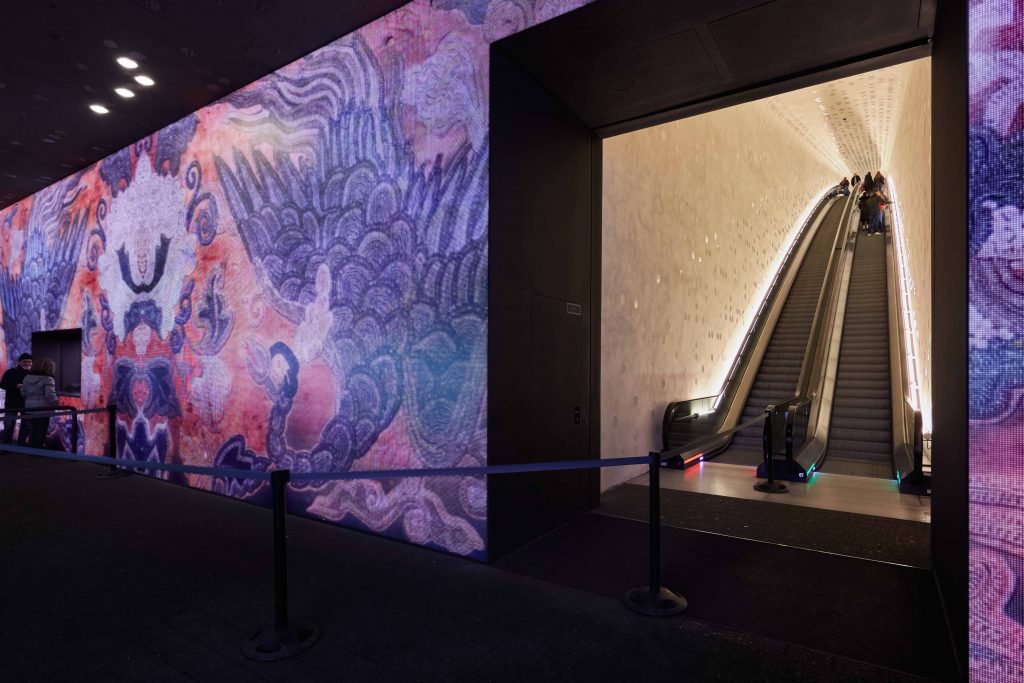
The chosen source image was a Chinese embroidery piece predicted to be from the Yuan or Mind Dynasty around the 14th-15th Century. It may be in tatters but is still beautiful in the traditional way.
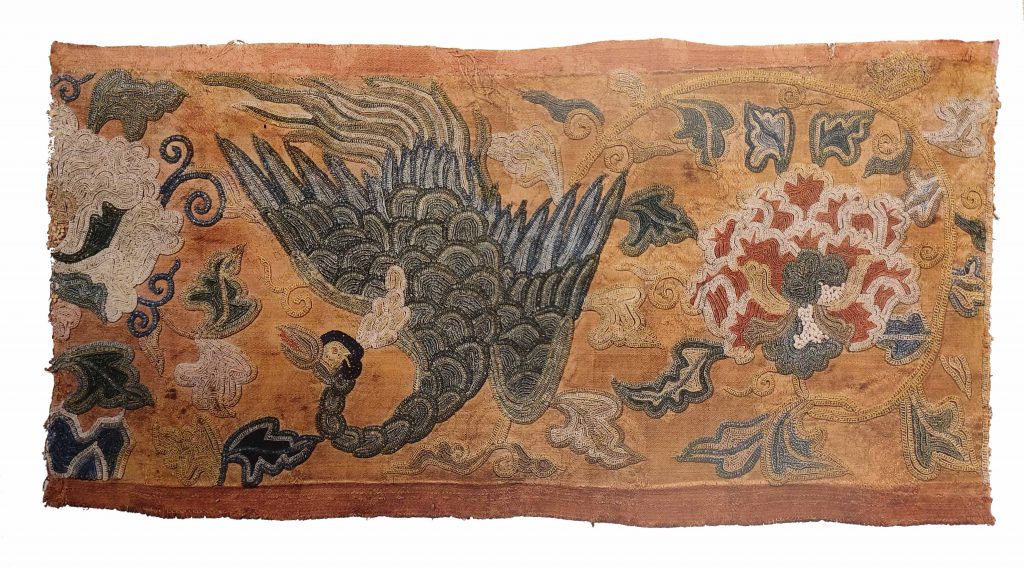
The poem featured in ancient chinese text is a poem about time by tang poet, Wei Zhuang (韦庄).
槐陌蝉声柳市风,驿楼高倚夕阳东。
往来千里路长在,聚散十年人不同。
但见时光流似箭,岂知天道曲如弓。
平生志业匡尧舜,又拟沧浪学钓翁。
(Poem Translation tbc)
Process link: https://oss.adm.ntu.edu.sg/ytan149/silk-road-process-part-2/
Artist Bio
Artist: Tan Ying Hui
Bio:
Ying Hui a trained interior designer who seeks to deliver more substance into her spaces. Her passion in textiles, traditional and culture led her to further studies as a Design Art student at the School of Art, Design and Media at Nanyang Technological University. At ADM, she experiments with narrative within the interactive field searching for the best method to express connection between the one’s historical origin and identity.
An additional titbit about the artist, she is also musically inclined, with a mediocre Grade 8 certification in Violin.
Bio2:
Ying Hui is a artist who came from a interior design background who likes to express emotions into her art. She left the field of interior design to search for a soul in her art. She is now mainly exploring the field of interactive design, working in sound design, animation and coding. She also likes to explore textiles and embroidery and is passionate about incorporating ethnicity in art. She is inspired by the artists who uses traditional mediums for modern art and is inspired by their own ethnic groups such as Yuko Shimizu. Ying Hui particularly likes traditional Chinese costumes especially hanfu during the Ming dynasty.
Recent Artwork: Media Art Nexus
Resume: My Resume 2020
Artist Inspiration: Faig Ahmed

https://www.faigahmed.com/index.php?lang=en&page=8&projID=13
Faig Ahmed is an Azerbaijani contemporary visual artist who attempts to explore ancient tradition and culture through his experiments with textiles, pattern in oriental rugs.
